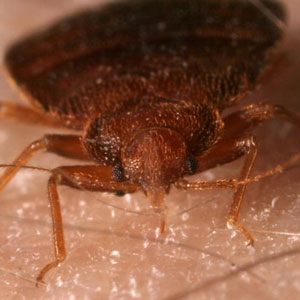How Do Professionals Control Bed Bugs?
By Chris Williams on October 11, 2013.
 Ask any pest management professional. You’ll hear that bed bugs are indeed much harder to control than most other household pests. A 2013 national survey of pest control companies found that the time spent on an initial service for an average size bed bug infestation ranged from one hour to more than five hours, with an average of 3.4 hours. Most companies said they need two or three service visits to get control of bed bugs. Cluttered homes typically needed more treatments than uncluttered homes.
Ask any pest management professional. You’ll hear that bed bugs are indeed much harder to control than most other household pests. A 2013 national survey of pest control companies found that the time spent on an initial service for an average size bed bug infestation ranged from one hour to more than five hours, with an average of 3.4 hours. Most companies said they need two or three service visits to get control of bed bugs. Cluttered homes typically needed more treatments than uncluttered homes.
Clutter provides bed bugs with lots of hiding places and makes it harder to get insecticides into those cracks and crevices where bed bugs are hiding. In fact, when pest control companies were asked what the biggest customer-related challenge was when treating bed bugs, most said, “clutter.” Coming in a close second was customers not following advice.
Insecticides Are Not the Only Control Tool
Most pest control companies use insecticides to control bed bugs. But more and more, companies are also incorporating other methods since bed bugs are showing resistance to many insecticides. Controlling bed bugs with insecticides alone is becoming increasingly difficult. Most professionals are also recommending mattress and box spring encasements for their bed bug customers. They are also using professional vacuuming as a control tool, and 43% of the companies use steamers to kill bed bugs in certain sites.
Heat is quickly becoming one of the most popular ways to treat bed bugs. All stages of bed bugs succumb to high temperatures for a certain period of time. Heating requires special equipment. Sometimes infested beds or furniture are heated in a large container. Often, entire rooms or buildings are heated using large heating units and fans.
Inspection is an important part of effective bed bug control. To supplement their visual inspection, more companies are also using bed bug inspection or monitoring tools. Half of the companies surveyed said they use pitfall-type traps that are placed under the legs of beds and furniture. About a third of companies use specialty bed bug traps that emit heat and/or carbon dioxide to attract bed bugs, while the use of less reliable sticky traps has declined. The use of bed bug dogs to sniff out bed bugs continues to increase. Almost half of the pest control companies said they have used detection dogs in certain situations.
Are Bed Bug Preventive Services in Your Future?
Two-thirds of the pest management companies surveyed in 2013 said they have or would soon sell preventive bed bug inspections, but there is still disagreement over whether customers are willing to pay for such services. Companies that offer proactive/preventive bed bug services are providing a combination of ongoing visual inspections, canine inspections, monitoring and trapping, and regular insecticide applications. About 45% of companies felt their customers were not interested in such services to prevent or detect bed bugs.
Photo credit: Armed Forces Pest Management Board / Foter / CC BY-NC-ND